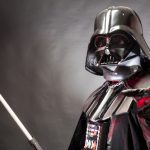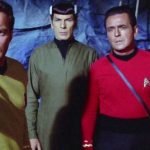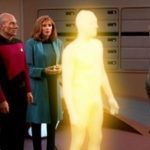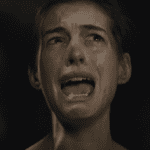 Mysteries
Mysteries  Mysteries
Mysteries  History
History 10 Surprising Stories About the Texas Rangers
 Humans
Humans 10 Philosophers Who Were Driven Mad by Their Own Theories
 Miscellaneous
Miscellaneous 10 Video-Game-Worthy Weapons and Armors from History
 Weird Stuff
Weird Stuff 10 Psychics Who Accurately Predicted Wartime Events
 The Arts
The Arts 10 Pieces of Art Inspired by a Broken Heart
 Health
Health 10 Science Fiction-Sounding New Medical Treatments
 History
History 10 Surprising Facts About the Father of Submarine Warfare
 Space
Space Ten Astonishing New Insights into Alien Worlds
 Weird Stuff
Weird Stuff 10 Bizarre Summer Solstice Rituals Still Practiced Today
 Mysteries
Mysteries Top 10 Haunting Facts About the Ghost Ship MV Alta
 History
History 10 Surprising Stories About the Texas Rangers
 Humans
Humans 10 Philosophers Who Were Driven Mad by Their Own Theories
Who's Behind Listverse?

Jamie Frater
Head Editor
Jamie founded Listverse due to an insatiable desire to share fascinating, obscure, and bizarre facts. He has been a guest speaker on numerous national radio and television stations and is a five time published author.
More About Us Miscellaneous
Miscellaneous 10 Video-Game-Worthy Weapons and Armors from History
 Weird Stuff
Weird Stuff 10 Psychics Who Accurately Predicted Wartime Events
 The Arts
The Arts 10 Pieces of Art Inspired by a Broken Heart
 Health
Health 10 Science Fiction-Sounding New Medical Treatments
 History
History 10 Surprising Facts About the Father of Submarine Warfare
 Space
Space Ten Astonishing New Insights into Alien Worlds
 Weird Stuff
Weird Stuff 10 Bizarre Summer Solstice Rituals Still Practiced Today
10 Films That Influenced Star Wars
It is not hyperbole to say that when Star Wars hit theaters in 1977, it changed cinema history forever. But while it may have seemed to have arrived from a galaxy far, far away, director George Lucas drew inspiration for his universe from multiple sources, including history, mythology, theology, and, as we will explore here, other films.
The movies on the following list range from World War II flicks to questionable propaganda films, westerns, Japanese classics, and sci-fi adventures. But all, in some way or another, left a lasting impression on the legacy of Star Wars.
Related: Top Ten Films That Have Had a Tangible Effect on Reality
10 2001: A Space Odyssey (1968)
In terms of story and tone, Star Wars and Stanley Kubrick’s 2001: A Space Odyssey could not be any more different. One is a fantasy tale with space battles and lasers, and the other is a brooding meditation on humanity featuring depictions of realistic space flight and ambiguous imagery. Yet, from its classical score to the many visual references and portrayals of sentient machines, Star Wars is full of nods to this groundbreaking film. And George Lucas has previously mentioned A Space Odyssey as being a huge influence.
The two films also have a direct link thanks to make-up artist Stuart Freeborn, who worked on both movies, creating the apes for 2001’s “The Dawn of Man” sequence and designing the puppet for Yoda in Star Wars.[1]
9 633 Squadron (1964)
633 Squadron is a World War II film directed by Walter Grauman about a fictional Royal Air Force (RAF) fighter-bomber squadron. Upon release, critics panned the movie for its historical inaccuracies. However, that did not stop 633 Squadron from becoming a war movie classic. Nor did it stop the film from leaving a significant impression on George Lucas and others working on Star Wars.
633 Squadron’s influence is most apparent in the famous “trench run” sequence toward the end of A New Hope, where Luke Skywalker and his squadron must attack a vulnerability in the Death Star. That is because Lucas based much of the action in that sequence on the 633 Squadron’s own finale, which sees the bombers flying through a deep fjord while being fired upon by anti-aircraft guns.[2]
8 Metropolis (1927)
Few sci-fi movies do not owe a debt to the 1927 German film Metropolis. And Star Wars is no exception. In particular, the futuristic art style of Metropolis’s eponymous city was a clear inspiration for the impossibly tall buildings of Coruscant. Furthermore, both the Star Wars franchise and Metropolis share the same central themes surrounding power conflict. However, nowhere does the influence of Metropolis make itself more apparent than in the design of C-3PO.
While the Star Wars crew may have given C-3PO a masculine identity, his resemblance to the more feminine robot Maschinenmensch from Metropolis is no accident. Instead, according to conceptual designer Ralph McQuarrie, who played a significant role in designing C-3PO, the Maschinenmensch was a direct inspiration.[3]
7 The Searchers (1956)
It is no secret that Star Wars borrowed many settings, plot devices, and tropes from many classic Westerns. However, few titles left such a clear impression on the films than The Searchers, a 1956 movie directed by John Ford and written by Frank S. Nugent.
The story follows John Wayne as a bitter civil war vet teaming up with his nephew to rescue his kidnapped niece. The basics of this plotline are mirrored in A New Hope. For that matter, so is the epic desert setting. But perhaps the most obviously influential scene is one where Wayne’s character returns to his brother’s ranch to discover the aftereffects of a massacre. The result is a scene strikingly similar to when Luke Skywalker returns to his aunt and uncle’s home to find they’ve been killed by stormtroopers and left burning.[4]
6 The Wizard of Oz (1939)
The Wizard of Oz and Star Wars are undeniably cultural touchstones in the history of cinema. And ever since Star Wars debuted on the big screen, fans, critics, and even cast members have been drawing comparisons between the two.
The closer you look at the films, the harder it is to ignore the resemblances. Both tell the story of an adventure-hungry teenager raised on a farm by their aunt and uncle. Through circumstances outside their control, the protagonists leave their world behind to traverse strange lands inhabited by various unusual creatures. As critic Roger Ebert notes, they also end up with a similar set of companions:
“The golden robot, lion-faced space pilot, and insecure little computer on wheels must have been suggested by the Tin Man, the Cowardly Lion, and the Scarecrow in The Wizard of Oz.”
Adding to the litany of similarities is the fact that concept designer Ralph McQuarrie went on record to say that Emerald City inspired the look of Cloud City in The Empire Strikes Back. In any case, whether it came directly or indirectly, The Wizard of Oz’s influence on the Star Wars franchise is undeniable.[5]
5 The 7th Voyage of Sinbad (1958)
The 7th Voyage of Sinbad is a notable influence on Star Wars in the simple fact that it pioneered many of the special effect techniques that Star Wars later relied on, including optical printing (where layers of film are placed on top of each other) and colorized stop-motion. But its influence extends far beyond that.
Like the original Star Wars, the story behind The 7th Voyage of Sinbad revolves around an adventure to rescue a princess. Sinbad also features a scene where the eponymous hero and a princess swing across a chasm on a rope, something mirrored in a scene featuring Luke Skywalker and Princess Leia in A New Hope.
The similarities also extend to the prequels, with the character Count Dooku, whose shades of grey villainy borrow heavily from Sokurah the Magician in Sinbad. When Sokurah’s evil ambitions are revealed in Sinbad, he unleashes the beasts of the island on our heroes. Count Dooku does the same thing at the end of Attack of the Clones.
Finally, Sinbad’s theme of showing kindness to lesser beings is something that plays out throughout the Star Wars franchise, particularly in the alliance formed between the rebels and Ewoks in Return of the Jedi.[6]
4 The Triumph of the Will (1935)
The Triumph of the Will was a big-budget propaganda film made for the Nazis. But while most movie studios would probably prefer not to talk about it, it is also one of the most influential movies ever in terms of cinematography. Indeed, the film’s now infamous aerial shots of thousands of Nazi soldiers standing at attention for Hitler has inspired movie moments in films ranging from The Lion King to Lord of the Rings and, of course, Star Wars.
Interestingly, the first shot in the Star Wars franchise that captures The Triumph of the Will’s presentation recreates the sequences in a positive light. This recreation occurs during the end of A New Hope when the good guys are rewarded with medals for their bravery and victory. However, shots in both The Empire Strikes Back and The Force Awakens take inspiration from the film to depict the bad guys as an unstoppably powerful and fascist group.[7]
3 Seven Samurai (1954)
While Star Wars undoubtedly draws much from Western culture, tradition, and cinema, its universe also rests upon the shoulders of Eastern influences. In particular, the robes, lightsabers, mannerisms, and religions of the Jedi and Sith are a clear nod to traditional Japanese culture. Furthermore, the word “Jedi” is said to come from the Japanese word “jidaigeki,” a genre of historical drama that includes many of the films of Akira Kurosawa, including Seven Samurai.
George Lucas has never been shy about his love for Kurosawa’s films and Seven Samurai. “I went and saw it, and it basically changed my life,” he would say in a 2005 interview with The Telegraph. “I mean, it’s a brilliant, brilliant film, and every time I see it, I can’t believe the magic mixture of a great story and great acting and humor and action and suspense—wonderful cinema.”
The film tells the story of a village frequently besieged by a group of raiders. Seeking protection, the villagers hire seven Ronin (samurai without masters) from different backgrounds to protect them. This premise of assembling a ragtag team is sometimes called the “Seven Samurai formula.” And you can find it all over Star Wars, from the original trio to the new heroes we meet in the sequels and spin-offs. There are also plenty of nods to the cinematography of Seven Samurai found through the Star Wars films, including the final “fake-out” duel between Kylo Ren and Luke Skywalker in Star Wars: The Last Jedi.[8]
2 The Dam Busters (1955)
Like 633 Squadron, The Dam Busters is another war film centered on pilots that significantly influenced the trench run sequence from A New Hope. The film, directed by Michael Anderson, tells the real-life story of RAF raids on three dams in German territory during World War II. Partway through the movie, the pilots are informed of a near-impossible shot they need to make to destroy these dams. A similar impossible shot scenario occurs during Star Wars when Luke Skywalker has to blast a small thermal exhaust port with a proton torpedo.
Lucas also pulled dialogue near-verbatim out of The Dam Busters. For example, take the dialogue sequence where one of the pilots asks, “How many guns do you think, Trevor?” to which Trevor responds, “I’d say there’s about ten guns. Some in the field, some on the tower!” Sound familiar? The influence of The Dam Busters only becomes more obvious when you realize that A New Hope’s cinematographer, Gilbert Taylor, worked on special effects photography for The Dam Busters. Make-up artist Stuart Freeborn also worked on both films.[9]
1 The Hidden Fortress (1958)
Another Japanese movie directed by Akira Kurosawa is The Hidden Fortress, and its influence on Star Wars is perhaps even more apparent than Seven Samurai. For instance, the contrasts between many of the characters are unmissable. Both films feature a feisty proto-feminist princess leading a rebellion after the bad guys destroy their kingdom. Meanwhile, the character arc of legendary general Rokurōta Makabe in The Hidden Fortress is almost identical to that of Obi-Wan Kenobi in A New Hope. Both Makabe and Kenobi are initially brushed off as crazy old men by those around them but show their prowess in a duel with an old rival that allows their allies to escape.
In both films, the story is largely told through the eyes of two unassuming “lower-class” characters. In The Hidden Fortress, this role is fulfilled by two bickering peasants, Tahei and Matashichi. Of course, in Star Wars, the same role is fulfilled by droids, not people. Nonetheless, in both instances, these overlooked characters often end up unintentionally saving the day on multiple occasions. There is also a bad guy turns good subplot in General Hyoe Tadokoro that bears some similarities to Darth Vader in Return of the Jedi. Finally, multiple Star Wars films and The Hidden Fortress feature a big baddie pulling all the strings off-screen.
Beyond the story and characters, Star Wars also clearly draws from the cinematography and style of The Hidden Fortress. Take, for instance, the use of wipe transitions as a way to intercut scenes and imply the passage of time or the similarities in the musical score.[10]








